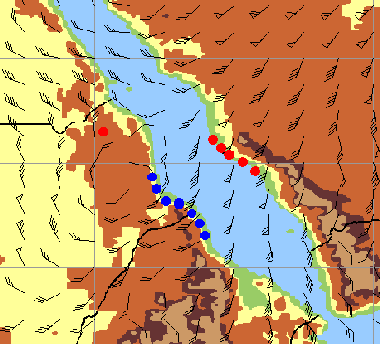5 December. Breeding and control continue in Sudan interior
Late summer breeding is still in progress in northern Sudan which could produce a few swarmlets. These are expected to move toward the Red Sea coastal areas where low numbers of locust are already present and breeding in Eritrea, Saudi Arabia, and Yemen. Elsewhere, only isolated adults were present in Mauritania, Algeria, and Morocco.
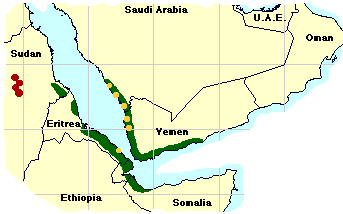
5 November. Late summer breeding in Sudan
Additional late summer breeding has been detected in northern Sudan where small hopper bands are forming. These could produce a few swarmlets that may threaten the Red Sea coastal areas where good rains fell last month. Ground surveys are recommended on the coasts of Eritrea, Saudi Arabia, Sudan and Yemen where locusts may already be present. Elsewhere, locust numbers continue to decline in summer breeding areas of Mauritania and along the border of India and Pakistan where vegetation is becoming dry.
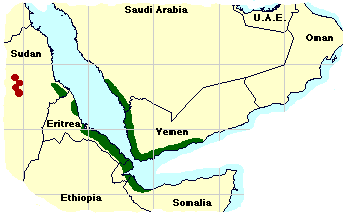
20 October. Locust Alert! Red Sea rainfall
Locust numbers may be increasing in some parts of the winter breeding areas along the coastal plains of the southern Red Sea. As good rains fell in August and September and again earlier this month, breeding may have already occurred but was not detected. Breeding will continue during the next few months, giving rise to increasing numbers of locusts. Ground surveys are recommended in Eritrea, Saudi Arabia, Sudan and Yemen.
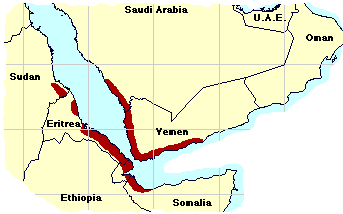
6 October. Bands form in Yemen while locusts decline elsewhere
Locust numbers are declining along the Indo-Pakistan border. Small hopper bands have formed in the Yemen interior and control was undertaken. Isolated adults are present in parts of central Sudan, southern Egypt, northern Somalia, south-eastern Iran, and in western Mauritania and northern Mali. Locust numbers are expected to remain at a low and non-threatening level.
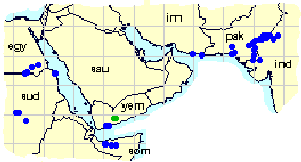
9 September. Breeding in Yemen; floods in Sudan and Yemen
In addition to earlier reports, the locusts present in the interior of Yemen are now breeding. Floods were reported in eastern Sudan and on the Red Sea coast of Yemen. These areas will require careful monitoring in the coming weeks.
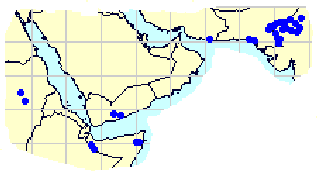
4 September. Small scale summer breeding; floods in Yemen
Small scale breeding continues along the Indo-Pakistan border, and in parts of eastern Sudan and southern Mauritania. Locust numbers are expected to remain at a low and non-threatening level. However, floods have occurred on the Red Sea coast of Yemen and higher numbers are present in the interior. This will require careful monitoring in the coming weeks.

26 August. Numbers increase in Yemen interior; elsewhere calm
Low numbers of adults are scattered along the Indo-Pakistan border, and in parts of eastern Sudan and northern Somalia. Higher numbers are present in the interior of Yemen. Breeding is expected in most of these areas.

12 August. Small scale summer breeding in progress
Small scale breeding is in progress along the Indo-Pakistan border. Good rains fell during the first ten days of August in southern Mauritania, Tamesna of Mali and Niger, western, central and eastern Sudan, and on the Red Sea coast and interior of Yemen. Breeding is expected in these areas.
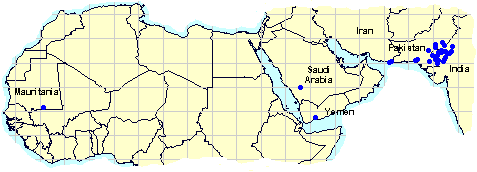
5 August. Small scale breeding likely in a few places; situation calm
The current situation is calm. Small scale breeding is likely to be in progress along the Indo-Pakistan border. Isolated breeding may occur in parts of Sudan, Mauritania, Mali and Niger where a few locusts may be present. No significant developments are expected.

10 July. Small scale breeding probably in progress along Indo-Pakistan border
Low numbers of adults have arrived in the summer breeding areas on both sides of the Indo-Pakistan border. The monsoon rains started in late June in these areas and, as a result, small-scale laying is probably in progress. A lack of reports from other countries of any significant infestations suggests that the situation is currently calm.
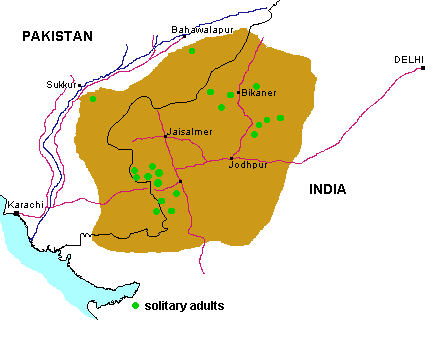
3 July. Locusts arrive along Indo-Pakistan border for summer breeding
Low numbers of adults have arrived in the summer breeding areas along the Indo-Pakistan border. As the monsoon rains have started, small scale breeding is expected. Isolated adults are present in northern Mali and in eastern Sudan. These will lay eggs with the onset of the summer rains. A few adults were reported from northern Somalia and southern Yemen. Overall, the situation is considered calm in all areas.
16 June. Spring breeding concludes
Breeding has come to an end in the spring breeding areas along the Red Sea area and in South-West Asia. Small scale control was undertaken in late May in western Pakistan where scattered adults are now present. Lower numbers of adults are present in Rajasthan, India. No other significant infestations have been reported to date.
1 June. Spring breeding has nearly finished in the Red Sea area and in SW Asia
As a result, a few small swarms have formed on the Red Sea coastal plains near the borders of Saudi Arabia and Yemen and moved to the interior of southern Yemen. Small scale control was carried out in western Pakistan as a result of earlier breeding.
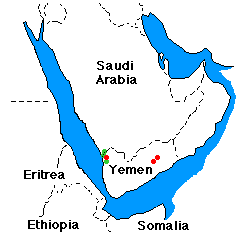
22 May. Spring breeding nearing the end resulting in small swarm formation
A few small swarms are forming on the Red Sea coastal plains near the borders of Saudi Arabia and Yemen. Control operations are in progress. There are reports of swarms in Wadi Hadhramaut in southern Yemen. Small scale control was carried out in western Pakistan as a result of earlier breeding.

5 May. Control operations resume on Red Sea plains
Control operations continue against hopper bands on the Red Sea coastal plains near the borders of Saudi Arabia and Yemen. Yesterday a swarm was seen in the area, suggesting that a few more swarms may form from any hoppers that escape control. Smaller infestations are present in southern Yemen and northern Somalia.
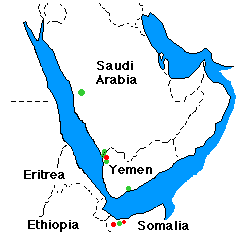
17 April. Control operations wind down on Red Sea plain
Control operations have finished or are nearly completed on the Red Sea coastal plains of Saudi Arabia, Sudan, Eritrea and Yemen. Aerial operations were carried out against several swarms in northern Somalia where the situation is being closely monitored.
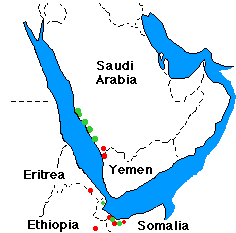
8 April. Large-scale control operations in Saudi Arabia
Large-scale control operations against hopper bands are winding down on the Red Sea coastal plains of Saudi Arabia. A few swarms were reported forming on the plains near the Saudi-Yemen border. Hopper bands and several swarms persist in northern Somalia. A few swarms were reported on the southern coastal plains of Eritrea and in the railway area of eastern Ethiopia.

13 March. Hopper bands on Red Sea coastal plains
Hopper bands and small swarms are present in north-western Somalia which could lead to a significant increase in locusts in the next few months. Hopper bands are also reported in northern Djibouti. Good rains fell over southern and eastern Arabia. Serious flooding was reporting in western Pakistan and eastern Iran. These rains may provide good conditions for locusts when they move off the Red Sea coastal plains next month towards the east. Large-scale control operations continue on the Red Sea coastal plains of Saudi Arabia while smaller operations are in progress in Yemen and are declining in Sudan and Eritrea.
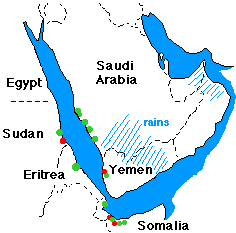
4 March. New infestations in northern Somalia
Large-scale control operations continue on the Red Sea coastal plains of Saudi Arabia while smaller operations are in progress in Yemen and declining in Sudan and Eritrea. New infestations of hopper bands and swarms present in north-western Somalia could lead to a significant increase in locusts. Flooding was reporting in western Pakistan.
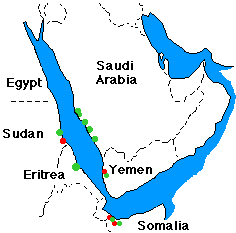
19 February. Vegetation is starting to dry out on Red Sea plains but operations continue
The situation is improving on the Red Sea coastal plains as a result of control operations and drying vegetation. However, large-scale operations are in progress in Saudi Arabia against new hopper bands. Control operations continue in Sudan, Eritrea, and Yemen. A few swarms have moved north along the Red Sea coast of Egypt and one crossed the Red Sea. These were controlled. Unconfirmed reports of locust infestations in northern Somalia are being clarified. Elsewhere is reported to be calm.
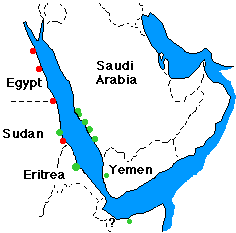
13 February. Control operations are declining on the Red Sea coastal plains
In Sudan, operations are now primarily confined to the Tokar Delta against hopper bands. Other operations continue on the coastal plains of Saudi Arabia and Eritrea. Local breeding is in progress on the plains of Yemen. There are unconfirmed reports of locust infestations in northern Somalia. Elsewhere is reported to be calm.
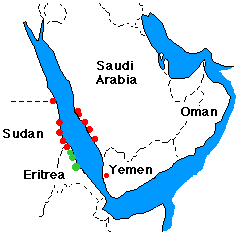
4 February. Swarms continue to appear on the Red Sea coastal plains
Reports from Saudi Arabia state that swarms were still appearing from the west. There were also reports of several swarms in south-eastern Egypt. All of these swarms are probably originating from breeding in Sudan and Eritrea. Two swarms seen in Yemen yesterday may have migrated south along the plains from Saudi Arabia or perhaps west across the Red Sea. Control operations are in progress in all countries. Elsewhere is reported to be calm.

27 January. Swarms still moving across Red Sea and laying eggs
Swarms are laying eggs south of Jeddah, Saudi Arabia and for a second time in Tokar Delta, Sudan. Other swarms are forming on the Sudanese coast and a few have moved into south-eastern Egypt. Hopper bands are present on the coast of Eritrea. Control operations are in progress in all areas. Low numbers of adults are present on the coast of Yemen. Locust numbers will continue to increase in the coming weeks on the coasts of the Red Sea. Elsewhere is reported to be calm.
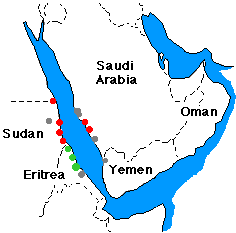
6 January. Saudi Arabia invaded by swarms from Sudan and Eritrea
Reports were received of swarms appearing on the Red Sea coastal plains south of Jeddah, Saudi Arabia. These probably originated from breeding on the coastal plains of Sudan and Eritrea and migrated on south-westerly winds associated with a low pressure system over the area on the 5th. Another swarm appeared in south-eastern Egypt coming from the south. More swarms are likely to appear in Saudi Arabia and to a lesser extent in Egypt in the coming weeks.
